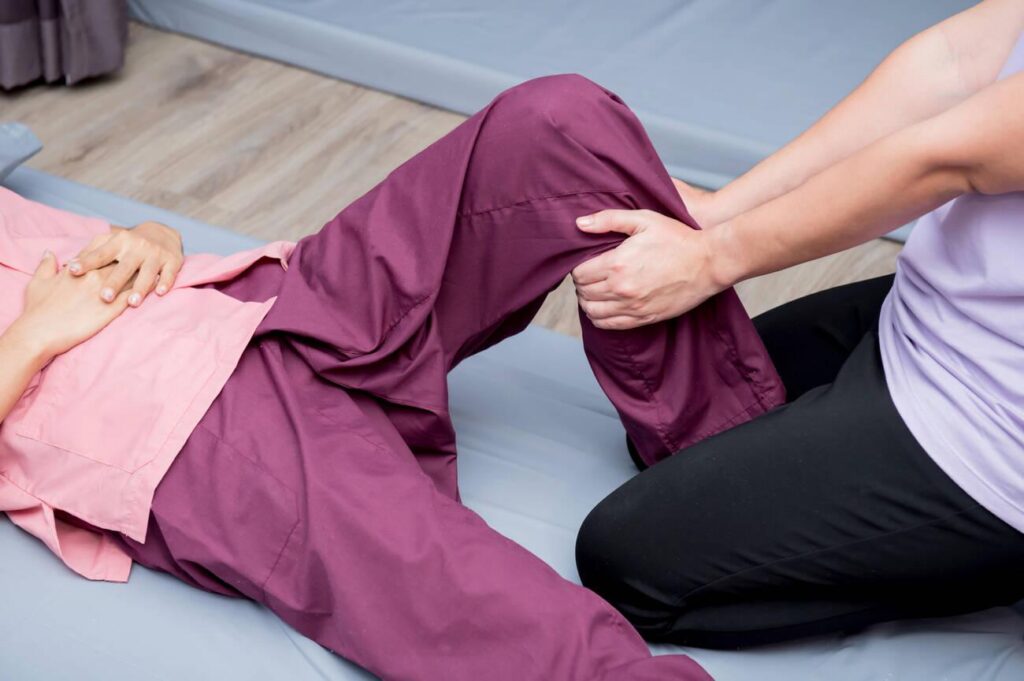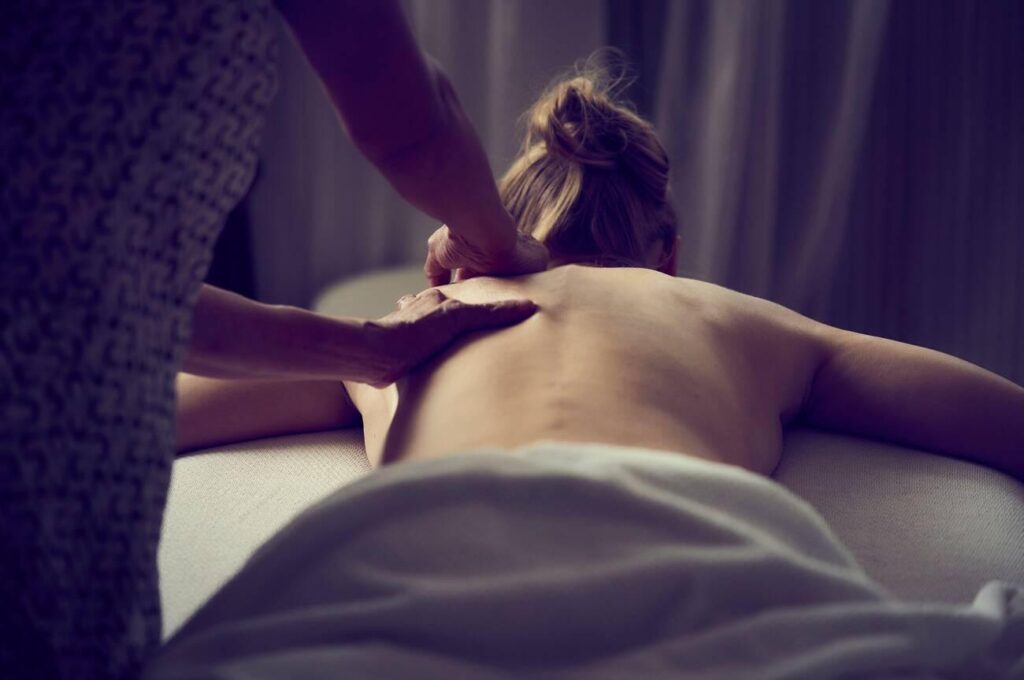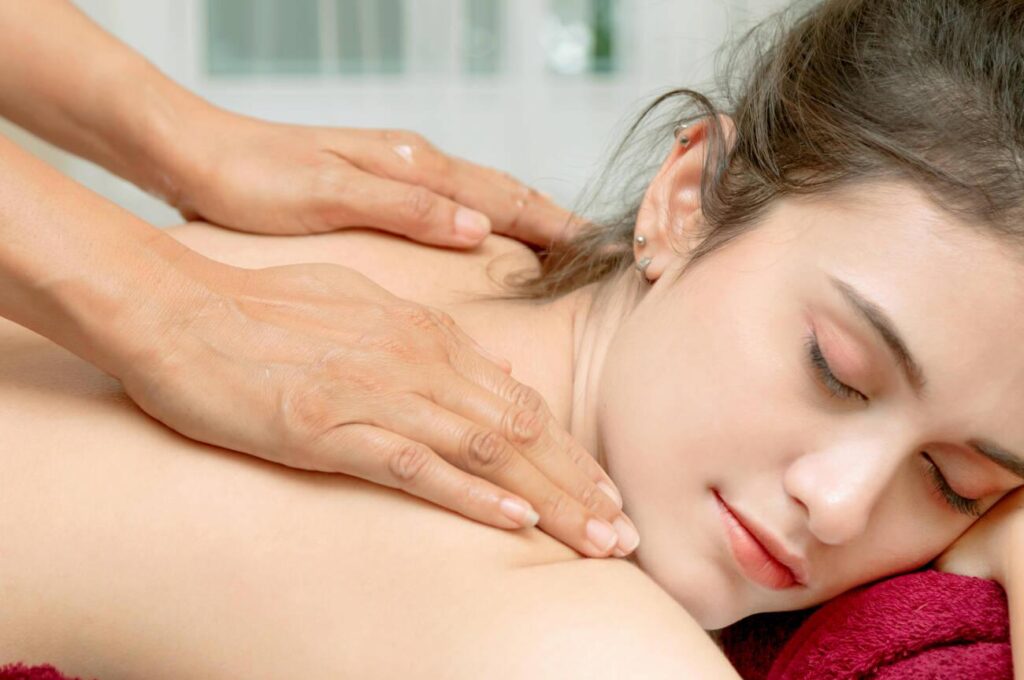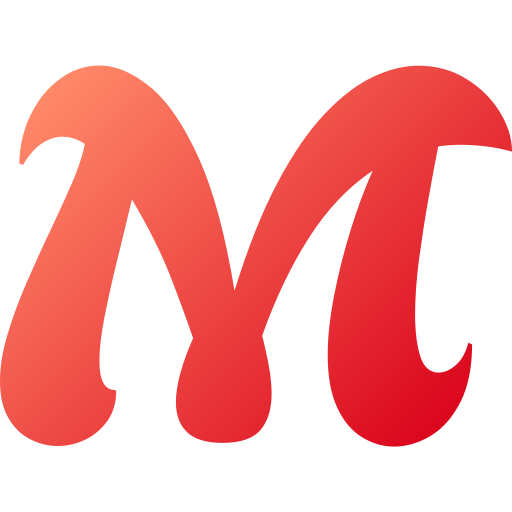Sore neck. Tight calves. Back that sounds like bubble wrap. You want relief, but do you buy a home massage machine or book a professional massage? Good news: you don’t have to guess. In this easy, honest guide, you’ll learn the real differences between home devices and hands-on therapists, what each does best, how much they cost over time, when they’re not a good idea, and how to combine both for maximum results. You’ll also get simple buying tips, maintenance advice, ready-to-use routines, and a clear decision checklist.
Short answer: A home massage machine is fantastic for daily maintenance and quick relief. A professional massage is unbeatable for complex tension, full-body resets, and tailored care. Most people get the best results by using both—machines for everyday upkeep and a pro session for deeper work and guidance.
The Quick Answer (So You Can Decide Fast)
- Choose a home massage machine if you want daily, on-demand relief for common tight spots, a one-time purchase, and full control of timing.
- Choose professional massage if you want customized pressure, whole-body assessment, nuanced techniques, and help with stubborn knots or movement issues.
- Best value: Combine both. Use a machine 10–20 minutes a day and book a pro massage every 2–6 weeks depending on your needs.

What Counts as a Home Massage Machine?
Home massage machines are devices you use yourself (or with a partner) to relax muscles, boost comfort, and support recovery. They range from simple to fancy.
Common Types of Home Massage Machines
- Massage guns (percussion devices): Rapid pulses to loosen tight spots
- Shiatsu cushions/pillows: Rotating nodes that mimic kneading
- Foot massagers: Rollers and compression for soles and arches
- Calf/knee massagers: Heat + compression for the lower legs
- Compression boots (recovery): Air chambers that squeeze and release
- Full-body massage chairs: Multi-motor chairs with rollers, compression, and heat
- Heating pads: Gentle heat to encourage relaxation (often used before other techniques)
- TENS/EMS units: Electrical stimulation to nerves/muscles (wellness use; follow safety guidance)
Tip: Different machines do different jobs. A massage gun won’t feel like a Shiatsu cushion, and compression boots won’t replace a full massage chair. Pick based on your body, lifestyle, and budget.
What Do You Get With a Professional Massage?
A licensed therapist brings knowledge, listening, and hands-on skill. You get:
- Assessment: Where is the tension coming from? What’s causing it?
- Personalization: Pressure, pace, and techniques tailored to your body that day
- Technique variety: Swedish, deep tissue, myofascial work, sports techniques, stretching, and more
- Adjustments on the fly: A therapist can notice and respond to changes in your muscles moment by moment
- Whole-body logic: What happens in your hips can affect your neck—humans connect the dots better than machines
Note: Massage is wellness, not medical treatment. For injuries or health issues, always talk to your doctor first.
Head-to-Head: Home Massage Machine vs. Professional Massage
Here’s the big picture in one glance.
| Factor | Home Massage Machine | Professional Massage |
|---|---|---|
| Convenience | Anytime, anywhere | By appointment |
| Cost | One-time purchase (plus power/maintenance) | Pay per session |
| Customization | Limited to preset modes + your hand | Highly personalized |
| Learning curve | Short (watch 1–2 quick guides) | None for you—therapist leads |
| Pressure control | You control, but reach/angle limits | Therapist fine-tunes and adapts |
| Coverage | Focused areas | Full-body or targeted, with flow |
| Results on stubborn knots | Good with practice | Often better and quicker |
| Privacy | Full (you’re at home) | Private room, but you travel |
| Time efficiency | 10–20 min quick sessions | 60–120 min dedicated time |
| Aftercare | Easy, you’re already home | Travel can reduce post-massage calm |
| Safety | Follow instructions and limits | Screened by therapist; still follow contraindications |
Cost Over Time: What You’ll Likely Spend
Let’s compare typical price ranges. Your local prices may differ, but the pattern holds.
| Option | Upfront Cost | Ongoing Cost (1 Year) | 1-Year Total | 3-Year Total | Notes |
|---|---|---|---|---|---|
| Massage gun (mid-range) | $120–$250 | $10 (power, negligible) | $130–$260 | $130–$260 | Great for quick spot relief |
| Shiatsu cushion/pillow | $50–$150 | $5 | $55–$155 | $55–$155 | Easy for neck/upper back |
| Foot massager | $90–$200 | $10 | $100–$210 | $100–$210 | Daily use for desk workers |
| Compression boots | $400–$1,200 | $15 | $415–$1,215 | $415–$1,215 | Athletes love these |
| Massage chair | $1,500–$6,000 | $50 (power/maintenance) | $1,550–$6,050 | $1,650–$6,300 | Space + budget required |
| Professional massage (60 min) | $0 | $70–$120 per session | $840–$2,880 (1x/month) | $2,520–$8,640 (1x/month) | Prices vary widely |
| Hybrid plan (gun + 6 pro sessions/yr) | $120–$250 | $420–$720 (sessions) | $540–$970 | $1,380–$2,410 | Strong value for most |
Bottom line: Machines are cheaper long term and great for daily care. Pro sessions add the “human factor” and fix tricky problems faster.
How Each Option Feels (In Real Life)
- Home massage machine: Quick and handy. Use it while you watch a show. You control intensity and can stop anytime. Downside: it won’t read your body like a pro, and some areas are hard to reach (hello, mid-back).
- Professional massage: Feels like your body is finally being understood. Pressure adapts. Flow is smarter. You leave feeling taller, lighter, and calmer. Downside: needs scheduling and a larger budget.
The Science (In Plain English)
Massage—by hand or machine—works through:
- Touch receptors: Pressure and movement tell your nervous system it’s safe to relax
- Blood flow: Warmth and gentle pressure help muscles feel less tight
- Fascia glide: Slow, steady pressure can help layers move better
- Brain reset: You shift from “fight/flight” to “rest/digest,” which lowers stress
Pro therapists can change pressure, angle, and rhythm to match what your tissues are doing. Machines do repeats very well, which is great for daily maintenance.
Who Should Choose a Home Massage Machine?
- Desk workers with tight neck/shoulders wanting short daily sessions
- Runners and gym-goers needing quick post-workout recovery
- Parents or caregivers who can’t easily schedule spa time
- People who prefer privacy and full control of timing
- Budget-conscious folks who want long-term savings
Who Should Book a Professional Massage?
- Anyone with stubborn, complex tension patterns that don’t release with DIY
- People needing a whole-body reset and movement assessment
- Those unsure where the pain is coming from or what to do about it
- People who’d rather relax and let a professional handle everything
- Individuals with special considerations (prenatal, postnatal, elderly), with medical guidance
Best of Both Worlds: The Hybrid Plan
- Daily: 10–20 minutes with your home massage machine (neck, calves, back, or feet)
- Weekly: 1–2 mobility or stretch sessions (10 minutes)
- Every 2–6 weeks: Professional massage to address deeper issues and update your routine
This combo builds momentum. Machines keep you comfortable day-to-day; a pro breaks stubborn patterns and guides your approach.
Types of Home Massage Machines (With Pros and Cons)
| Device Type | Typical Price | Best For | Pros | Cons |
|---|---|---|---|---|
| Massage gun | $120–$250 | Quads, glutes, calves, traps | Fast relief, portable, precise | Can be loud; angle limits for mid-back |
| Shiatsu cushion/pillow | $50–$150 | Neck, upper back, lumbar | Hands-like kneading, easy to use | Nodes can feel intense on bony spots |
| Foot massager | $90–$200 | Plantar soreness, tired feet | Daily relief, simple | Bulky; not for severe foot conditions |
| Compression boots | $400–$1,200 | Runners, cyclists | Great for circulation and recovery | Pricey; time to put on/off |
| Full massage chair | $1,500–$6,000 | Whole-body at home | All-in-one convenience | Cost, space, maintenance |
| Heat pad | $20–$60 | Warm-up and relaxation | Cheap, effective prep | Heat only, no massage action |
| TENS/EMS (wellness use) | $30–$200 | Nerve/muscle stimulation | Small and portable | Not massage; follow safety rules |
Safety First: When to Avoid or Get Advice
Don’t use a home massage machine (or get a massage) without medical advice if you have:
- Recent surgery, fractures, open wounds, or severe bruising
- Blood clotting disorders or are on blood thinners
- Uncontrolled blood pressure or serious heart conditions
- Severe osteoporosis
- Active infections or fever
- Pregnancy (unless using prenatal-safe methods with medical clearance)
- Nerve damage or reduced sensation
If something feels sharp, numb, or wrong—stop and get guidance.

How to Choose the Right Home Massage Machine (10 Clear Steps)
Step 1: Define your top 2–3 problem areas
- Neck/shoulders? Back? Feet? Calves? Hips?
Step 2: Match the device to the area
- Massage gun for large muscles; Shiatsu cushion for neck/back; foot massager for soles; boots for legs; chair for all-in-one.
Step 3: Set a budget you’re happy with
- It’s better to buy a good mid-range device you’ll actually use than a pricey one that becomes a clothes rack.
Step 4: Check noise levels
- Under 50–55 dB is friendlier for shared spaces.
Step 5: Look for usable attachments (guns)
- Ball (general), fork (along the spine), bullet (trigger points), flat (large areas).
Step 6: Prioritize ergonomics
- Can you reach your mid-back? Is it comfortable to hold for 10 minutes?
Step 7: Seek safe defaults
- Auto shut-off, soft-start speeds, rounded heads, and clear instructions.
Step 8: Read real reviews
- Look for mentions of durability and customer service, not just unboxing excitement.
Step 9: Warranty and support
- 12 months minimum; extra points for easy parts or battery support.
Step 10: Try it if you can
- A quick test tells you if the pressure and shape feel right.
Bonus H4: Features That Actually Matter
- Variable speeds (3–5 is enough)
- Battery life (at least 2–3 hours of runtime for guns)
- Heat option for Shiatsu cushions/pillows
- Removable liners for foot/compression devices (for hygiene)
- Washable covers/cushions
Maintenance and Hygiene
| Device | After Each Use | Weekly | Quarterly |
|---|---|---|---|
| Massage gun | Wipe head; air-dry | Check attachments; charge | Inspect battery/charging port |
| Shiatsu cushion | Wipe cover; cool down | Wash removable cover | Inspect seams/zip |
| Foot massager | Empty debris; wipe liners | Wash/replace liners | Check rollers and fan |
| Compression boots | Air-dry chambers | Wipe interiors | Inspect hoses/zippers |
| Massage chair | Wipe touchpoints | Vacuum crevices | Service per brand guide |
Simple rule: keep it clean, dry, and charged. Store away from extreme heat.
Simple Routines You Can Start Today
Desk Worker (15 Minutes, Daily)
- 3 min heat pad on neck
- 6 min Shiatsu cushion (neck/upper back)
- 4 min massage gun on traps and forearms (low–medium)
- 2 min gentle neck stretches
Runner/Gym-Goer (20 Minutes, Post-Workout)
- 10–15 min compression boots or foot massager
- 5 min massage gun on quads, calves, glutes (medium)
- Light hydration + easy walk after
Tired Feet, All Standing Day (12 Minutes)
- 10 min foot massager (moderate)
- 2 min gentle calf stretches
General Stress Reset (15–20 Minutes, Evening)
- 5 min heat pad (upper back)
- 8–10 min Shiatsu pillow on the back (with a towel if it’s strong)
- 2–3 min slow breathing (inhale 4, exhale 6)
Common Mistakes (And Easy Fixes)
- Going too hard, too soon: Start gentle. Your body opens up; you don’t need to force it.
- Staying too long on one spot: 60–90 seconds is plenty. Move around to avoid soreness.
- Skipping warm-up: Add 3–5 minutes of heat—everything works better.
- Using on bone or the spine: Stick to muscles. Use fork attachment alongside the spine, not on it.
- Forgetting hydration: Drink water before and after for happier tissues.
- Expecting one session to fix months of tension: Consistency beats intensity.
When a Professional Massage Is the Smarter Move
- You’ve tried a machine for 2–3 weeks with little change
- Pain limits sleep or daily tasks
- You’re not sure where the tension starts (neck pain might start at the hips)
- You want a plan: exercises, stretches, and a smarter routine
- You prefer to relax and let someone else do the work
Tip: Bring your machine to your next pro session (or photos of it). Ask your therapist how to use it better between visits. Most will happily guide you.
Decision Table: Match Your Goal to the Best Option
| Goal | Best First Choice | Why | Backup/Upgrade |
|---|---|---|---|
| Quick daily relief | Home massage machine | On-demand, low cost | Add pro massage monthly |
| Deep, stubborn knots | Professional massage | Custom techniques | Use a massage gun for upkeep |
| Foot heaviness | Foot massager | Specialized rollers/compression | Pro foot/leg massage if persistent |
| Post-run recovery | Compression boots or gun | Speeds blood flow, eases soreness | Pro sports massage pre/post race |
| Whole-body unwind | Professional massage | Full flow and assessment | Massage chair if budget/space allow |
| Privacy and control | Home massage machine | No travel, your rules | At-home pro service if available |
Can a Home Massage Machine Replace a Professional?
For daily maintenance—yes, often. For complex issues and full-body logic—no. Think of a device like a toothbrush and floss: essential for daily care. A professional is the hygienist who gets the places you can’t reach and gives you a plan.
Environmental and Lifestyle Considerations
- Fewer trips out = fewer emissions
- Less product packaging over time
- Easier for mobility-limited folks to get care at home
- Lower stress: you own your schedule
Small wins, big impact.
Real User Snapshots
- Sam (Desk Worker): “Five minutes with a massage gun on my traps before calls and I stop frowning. My headaches dropped a lot.”
- Alia (New Mom): “Foot massager at 9 PM is my mini vacation. Monthly home visit from a therapist keeps my back sane.”
- Jordan (Runner): “Compression boots after long runs make stairs less scary. I still book a sports massage before race day.”
A Simple 4-Week Plan to Test What Works
Week 1
- Pick one device (e.g., Shiatsu cushion). Use 10 minutes daily.
- Track how you sleep and how your neck feels.
Week 2
- Add a massage gun (5 minutes on traps/forearms). Keep notes.
Week 3
- Try a professional massage. Share your notes. Ask for 2–3 tailored tips.
Week 4
- Blend both. Set a practical weekly schedule you can keep.
If you feel 20–40% better by week 4, you’ve found your combo.

Quick Checklist Before You Buy
- My top pain areas are: ________
- My budget is: ________
- I prefer sessions of: 10 / 20 / 30 minutes
- Noise matters? Yes / No
- Storage space? Drawer / Closet / Chair space
- Warranty length: ________
- Return policy: ________
If you can’t tick most boxes with confidence, keep looking.
Summary: So, Which Is Better?
- For everyday relief and budget control: a home massage machine wins.
- For tailored care and solving complex patterns: a professional massage wins.
- For most people, the best answer is both. Use your device daily, and see a pro every few weeks. You’ll feel better, move better, and spend smarter.
FAQs: Home Massage Machine vs. Professional Massage
Is a Home Massage Machine as good as a professional massage?
A home massage machine is great for daily relief and maintenance. A professional massage is better for complex knots, full-body balance, and tailored techniques. Many people use both for the best results.
Which Home Massage Machine should I buy for neck and shoulder pain?
A Shiatsu pillow works well for the neck/upper back, and a massage gun helps traps and shoulder blades. Look for adjustable intensity, heat (optional), and a comfortable shape that fits your body.
How often should I use a Home Massage Machine?
Start with 10–20 minutes a day on your main tight areas. Keep pressure light to moderate. If you feel sore the next day, reduce time or intensity. Consistency matters more than force.
Are Home Massage Machines safe?
They’re generally safe if you follow instructions. Avoid bony areas, fresh injuries, and medical red flags (recent surgery, blood clots, active infections, etc.). If you’re pregnant or have a condition, ask your doctor first.
What’s the most cost-effective approach: device or pro massage?
Over time, a Home Massage Machine costs less and covers daily care. A monthly professional massage adds personalized fixes and faster progress on tough spots. A hybrid (device + periodic pro sessions) is both effective and affordable for most people.
